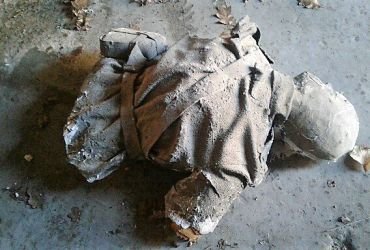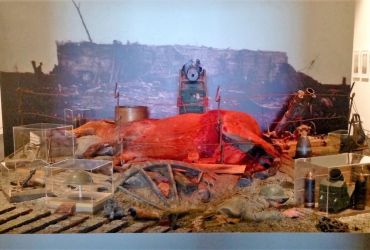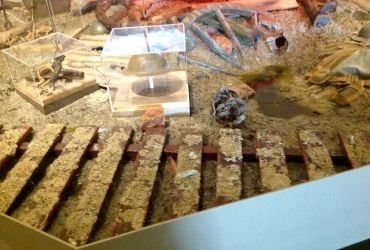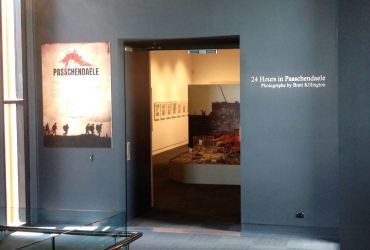Passchendaele Diorama Contract For NAM
The diorama which the team at HRD (Heritage, Research, Display) designed and built for the NAM (National Army Museum) exhibition, Passchendaele - A Descent Into Hell, for the WW1 Centennial, was to be a full size representation to support the Museum's artefacts. It was to convey the chaos and the atrocious conditions that this battle, often referred to as our darkest day in history, was undertaken in.
There were dimensional restraints around this diorama. Due to its placing in the gallery, it was to be used to attract the public into the space through the main doors, but not restrict the flow of people around the gallery itself. We discussed several proposals with Museum staff before we settled on the final design. It was designed with a rise in its physical height to be better viewed from the foreground where people entered the gallery through the main doors. It slowly rose to the rear of the plinth, where the German machine gun, which played such a devastating role in the battle itself, was displayed. The barbed wire which dissected the landscape was to demark the attacking and defending forces and their respective artefacts. The placement of the cases for these was decided by us, in collaboration with Museum staff.
The diorama was built in HRD's studio in Hawke's Bay and transported to the Museum in one truck, in modules. Its assembly required us to be onsite for only two hours and was carried out with assistance from Museum staff. The artefacts were then installed by the Museum team prior to the display's opening, which occurred after we left.
The finish was to be realistic with the emphasis on wet, so a variety of resins was used in its construction, depending on the look required. This was a complex build for HRD. It took considerable planning and extensive product experimentation; a challenge which we enjoyed greatly. The display was completed and opened on time. A priority for the team at HRD was for this diorama to convey to the public the tragic environment in which this battle took place, as well as create an emotional connection to the soldiers' experiences on that fateful day in 1917. We believe this was achieved, as from information later conveyed to the team at HRD by Museum staff, numerous members of the public who viewed this exhibition were visibly moved by it.



